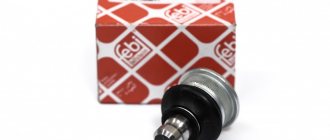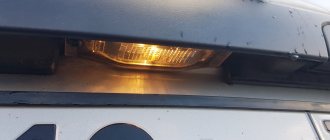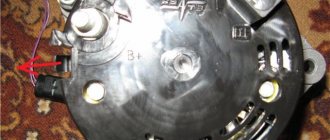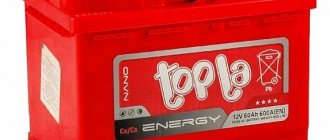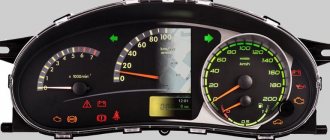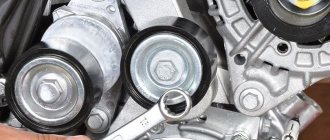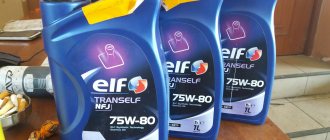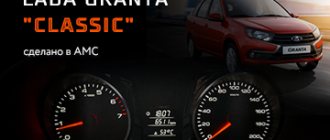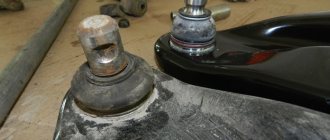The main purpose of any bearing is to support and fix the shaft. This ensures free rotation of the shaft in space. In addition, the bearing takes on the mechanical load and transfers energy to other elements. Wheel bearings are a type of rolling bearings. Without it, it is impossible to ensure that the wheel rotates smoothly around its axis without displacement and runout. These devices are used in all trucks and cars, including the Lada Largus. In this case, the front wheel hub element has a number of differences from the wheel bearing on the rear axle of the car.
Causes of malfunction
The front wheel bearing is a fairly strong part in its structure, and in order to prematurely fail it requires the application of truly significant efforts. With adequate operation, this suspension component exhibits enviable survivability, without annoying the owner with hints of its malfunction. Only natural wear and tear over a long run can affect the condition of this component.
If we touch on the reasons for the failure of the bearing we are considering, we can highlight several aspects:
- Increased mileage. Bearing failure in a Lada Largus can make itself felt after a mileage of 60 to 110 thousand km. This parameter is individual for each model. It is also directly influenced by operating conditions. The occurrence of a breakdown will be indicated by a specific crunching sound coming from the front wheel area. Almost every driver knows about this sound accompaniment of a malfunction.
- Loss of tightness. The separator part of the bearing is covered with plastic casings. They allow the lubricant to be retained and reduce the amount of friction that occurs when the internal race of the product rotates together with the hub. Over time, these protective elements become unusable, after which dirt penetrates into the working area, washing away the lubricant. Soon a hum appears, which hints to the owner that the node needs to be diagnosed.
- Extreme riding. Broken roads are not the ally of wheel bearings. Regular driving of the Lada Largus over potholes mercilessly damages these seemingly reliable suspension elements.
- Incorrect installation. An incorrectly replaced bearing will not perform its functions and will soon require another replacement.
Malfunctions and their diagnosis
Car owners remember about these parts hidden from view in the hub only when problems begin and the wheel makes extraneous sounds when moving. If the issue is not natural wear and tear, then the cause may be errors during replacement or the use of parts of questionable manufacture. Such bearings are not so easy to deform or break. To achieve their destruction, you need to try hard. Typically, this element rarely gives a car enthusiast a reason to visit special service stations.
Why parts fail
| Factors | Characteristics |
| Long mileage. | Depending on the quality of the components, the first signs of the need for replacement may appear at mileage from 60,000 km to 110,000 km. This parameter may differ for products from different manufacturers. |
| Incorrect operation. | Evidence of problems with the Largus wheel bearing will be a characteristic crunch when the wheel rotates, which can be difficult to confuse with another malfunction. Even if a car enthusiast is a novice and does not understand the structure of a car, he will immediately understand this sound. |
| Violation of tightness. | The separator is closed with plastic covers. Firstly, these linings retain lubricant inside, and secondly, they reduce the friction force that occurs during rotation of the inner race and hub. With natural wear and tear, such a plastic casing loses its original tightness. Dust and dirt can get inside the bearing. At the same time, the lubricant loses its properties. The friction force increases, the parts begin to heat up. Ultimately, a characteristic hum appears from the lack of the proper amount of lubrication. He will inform the driver that the bearing needs to be changed as soon as possible before it begins to deteriorate. |
| Aggressive driving style. | Extreme rides, fast acceleration and sharp braking also do not have a positive effect on the service life of wheel bearings. And if you add to this frequent driving over bumps and potholes at high speed, then these reliable and durable suspensions will fail much earlier than required by regulations. |
Unskilled replacement work can also cause an early breakdown. If the car owner incorrectly installs the wheel bearing on his own or if incompetent car service technicians do it, you should not hope for a long service life of this part.
Even a high-quality model, if installed incorrectly, will not work correctly and will not perform its functions, and will fail very quickly.
Signs of Problems
To correctly determine the faulty wheel bearings of the Lada Largus, there are several simple but guaranteed symptoms of problems with this device. Firstly, there is a dry crunch coming from the wheel. This sound always appears when the hub bearings fail. The noise is caused by destroyed rotating elements of the product; their cage is already broken and a crunching sound occurs due to uneven placement. It is impossible to miss this moment, because the sound is clearly audible not only outside, but also inside the car when driving. If such noise occurs, the bearing must be replaced immediately.
The second symptom is the occurrence of strong vibration. When the wheel bearing wears out, vibration is transmitted to the body and is clearly felt on the steering wheel. This sign indicates complete wear of the holder: the destruction of the spherical elements has begun, which can at any time lead to the wheel jamming. It should be changed immediately.
The third, but at the same time indirect sign, is the car pulling to the side when driving. Of course, this could be incorrect wheel alignment, imbalance, etc. But it happens that such a sign also indicates that the lubrication in the bearing is not working and there is a slight force when the spherical elements rotate, which causes some kind of stopper.
Many motorists say in all seriousness that they can continue to drive with a faulty wheel bearing, and moreover, drive at high speeds. You can’t do something like this, it’s simply life-threatening. If a wheel gets stuck while moving, it will stop abruptly. It is not difficult to guess what will happen when, at high speed, one of the four wheels suddenly becomes motionless. In the best case, the car will suddenly be thrown onto the side of the road, and in the worst, into the oncoming lane under moving traffic, hence the accident. There are cases where a wheel jam caused the car to overturn.
If the bearing is about to fall apart, then you can drive to the nearest service station or garage, but at a speed of no more than 40 km/h, otherwise you risk getting into a serious accident.
Troubleshooting
In addition to the above symptoms indicating a faulty wheel bearing, you can carry out a number of checks to ensure the accuracy of the diagnosis. This is very easy to do and can even be done in a parking lot.
The process looks like this.
- The car is placed on a flat asphalt surface.
- With both hands you need to grab the top of the wheel and try to swing the wheel from side to side as much as possible. A broken hub will be indicated by play and characteristic clicks.
- To be more convincing, you need to hang the wheel with a jack and spin it as quickly as possible. If a crunching noise occurs, the part should be replaced.
There is also another method for diagnosing a wheel bearing, but this will require a lift. The Lada Largus car is front-wheel drive, so this method is suitable for it. The car is raised on a lift, the engine is started and the gear is engaged. You need to speed up the wheels and listen. If noise and vibration appear on one wheel or another, it means the part is failing.
Problems when paying with bank cards
Sometimes difficulties may arise when paying with Visa/MasterCard bank cards. The most common of them:
- There is a restriction on the card for paying for online purchases
- A plastic card is not intended for making payments online.
- The plastic card is not activated for making payments online.
- There are not enough funds on the plastic card.
In order to solve these problems, you need to call or write to the technical support of the bank where you are served. Bank specialists will help you resolve them and make payments.
That's basically it. The entire process of paying for a book in PDF format on car repair on our website takes 1-2 minutes.
Step-by-step replacement of the Largus wheel bearing: first step
First of all, prepare an inspection hole, or a lift if you don’t have one. If you don't have either, you won't be able to do all the work. Once the workplace is organized and all the necessary tools are at hand, you can move on to the main part:
- We install a support under the wheel from which the hub bearing will be removed
- Unscrew the Largus wheel bearing nut
- It is tightly tightened, so you can’t do it without an assistant.
- It is necessary to hold the brake pedal and unscrew the nut
- Hanging and removing the wheel
- If there is a front wheel speed sensor, then remove it
- Next we remove the brake disc
- Remove the shield by releasing the fasteners using Torx
At this point, the first stage of work can be considered completed. But then comes the most difficult part. Next, you need to disconnect the steering rod from the steering knuckle, remove the ball joint pin and disconnect the shock absorber strut.
Replaced the front hub
During maintenance, a slight play in the right hub was revealed. It doesn’t seem to be critical yet, but in two weeks the “long-haul” wakes up, and somehow I’m not used to risking myself or my family, it’s not worth it. Started searching for the bearing. The original Renault is not even cheap, about three rubles, and for a Nissan it is even more expensive. It’s interesting that during disassembly it turned out that my number was just Nissan’s! Analogues are more than two times cheaper, but the reviews on the Internet are far from unambiguous, in short, depending on your luck. But this is due to the bearing; with analogues there is a second problem: very often the ABS conflicts and generates an error. I read various forums, found how to distinguish a fake of an original SNR bearing and began searching around the city. The search led to a store of original spare parts for VAZs. The kit for Largus costs 1,730 rubles.
Moreover, this is a 100% original in a branded Renault box and under the first sticker there was a second one, with the original number.
The kit does not include a ring for the sensor, but this is even correct. The ring does not fall out during disassembly, even when cleaning. I studied the key points for replacement on the internet and went on the lift. When checking, I discovered that over the 350 km that I drove after the maintenance, the play began to progress. So, it was not in vain that he started the replacement. I will not describe the process of removing the steering knuckle; there is even more than one detailed video on YouTube. I only had one problem: the CV joint did not want to come out along the splines. Slowly filling him with VD and tapping, he pushed him out of his place. Everything else was done using a hydraulic press. I've already pushed out the hub.
There is no wear or pitting on this side of the track. But the p/n didn’t show itself in any way except that there was a backlash, there was no hum or any other noise.
On our cars, unlike Logans, there is a boot made of microporous rubber at the sensor mounting location.
It's bad, but you can see the Nissan license plate.
The sensor ring fits very tightly, I did not knock it out. Cleaned the seat thoroughly.
It is not possible to remove the inner ring without splitting and damaging the seat; it sits very tightly.
I sprinkled metal dust on the old bearing; if you want, you can count the number of magnets. We should have 48 pairs as far as I understand. I honestly didn’t count.
Pressed the new bearing into the fist. I used the original retaining ring.
Well, then I put the hub in place. There is an old bearing lying nearby.
At first glance, the work is not very difficult, but there are some pitfalls like mine with the splines. If you hurry, you can “stick” to the CV joint.
Downloading a book
After successfully completing the payment (by any method) and returning to the KrutilVertel store from the payment system website, you will be taken to the successful payment page:
The book you purchased will be in your personal account, from where you can always download it.
Please note that after making the payment, you need to return back from the payment system website to the KrutilVertel website. If for some reason you did not return back to the site and closed the payment system tab with a message about the successful completion of the payment, please let us know - we will send you a letter indicating access to download the book
If for some reason you did not return back to the site and closed the payment system tab with a message about the successful completion of the payment, please let us know - we will send you a letter indicating access to download the book.
Payment via PayPal
After selecting payment via PayPal, the PayPal payment system will launch, where you need to select the payment method: bank card or PayPal account.
If you already have a PayPal account, then you need to log into it and make a payment.
If you do not have a PayPal account and you want to pay using a bank card via PayPal, you need to click on the “Create an Account” button - shown with an arrow in the picture.
PayPal will then prompt you to select your country and provide your credit card information.
After specifying the information required to make the payment, you must click on the “Pay Now” button.
Rear wheel bearing part numbers
Since Renault Logan can be equipped with ABS, there are two types of rear wheel bearings. One includes ABS function, and the second does not. Therefore, the parts are different and it is worth knowing if the car has ABS and buying a spare part accordingly.
ABS bearing article number
First, let's look at what kind of rear wheel bearings exist for Renault Logan with ABS.
The original article number for the Renault Logan rear wheel bearing with ABS looks like this - 77 01 207 677. The average cost in the Russian Federation is 2850 rubles.
There are quite a lot of analogues and they are all certified, but not all are recommended for installation on a car. Therefore, in the table we consider the main ones that can be installed on Renault Logan:
| Manufacturer's name | vendor code | Average cost in the Russian Federation in rubles |
| Starline | LO 03637 | 1150 |
| Denckermann | W413272 | 1250 |
| Bta | H1R023BTA | 1350 |
| Master-sport | 3637-SET-MS | 1600 |
| Coram | CR076 | 1700 |
| Kraft Automotive | 4105185 | 1750 |
| Asam | 30925 | 1800 |
| Pilenga | PW-P 3637 | 2000 |
| Koyo | KOYO-8088 | 2100 |
| Torque | PLP-101 | 2200 |
| Mapco | 26126 | 2300 |
| Febest | DAC37720037M-KIT | 2400 |
| Meyle | 16-14 650 0011 | 2400 |
| Nipparts | N4701045 | 2400 |
| Optimal | 701 977 | 2400 |
| ABS | 200425 | 2500 |
| Automotor France | ABR5575 | 3000 |
| SNR | R155.75 | 3200 |
| Febi | 24315 | 3900 |
| Ruville | 5575 | 3900 |
| SWAG | 60 92 4315 | 6000 |
SNR bearing for Renault Logan with ABS
Thus, it can be seen that an analogue of the original Renault Logan rear wheel bearing with ABS costs an average of 2,400 rubles. This is slightly cheaper than the part produced by the Renault plant.
Bearing article without ABS
Now, let's look at the article numbers of the original part, as well as its analogues without ABS:
7701205812 is the original catalog number of the rear wheel bearing for Renault Logan without ABS. The average cost in the Russian Federation is 2000 rubles.
As in the first option, there are quite a lot of analogues of the Renault Logan rear wheel bearing without ABS. Let's consider the main ones and those that are recommended for quality for installation on a car:
| Manufacturer's name | vendor code | Average cost in the Russian Federation in rubles |
| Kamoka | 5600011 | 600 |
| Dello | 30770102050812 | 700 |
| Master-sport | 3525-SET-MS | 700 |
| Starline | LO 03525 | 700 |
| Coram | CR025 | 700 |
| Bta | H21071BTA | 700 |
| Toko cars | HJ2-171MX | 750 |
| N.K. | 763908 | 780 |
| Cx | CX 597 | 800 |
| Febest | DAC25520037-KIT | 830 |
| Kraft Automotive | 4105010 | 900 |
| Profit | 2501-0869 | 900 |
| Pilenga | PW-P 3525 | 975 |
| Torque | DAC 25520037 | 975 |
| Febi | 05538 | 1000 |
| Fenox | WKB60171 | 1050 |
| Japan Cars | H21071JC | 1150 |
| Asam | 30450 | 1200 |
| Optimal | 702 312 | 1300 |
| Pilenga | PW-P 3525 | 1300 |
| ABS | 200004 | 1350 |
| Ruville | 5563 | 1500 |
As can be seen from the table, there are quite a few analogues of the rear wheel bearing for the version without ABS. At the same time, the cost is much lower than the original. The installation of these spare parts is carried out in standard seats and does not require any modification or modification.
Bearing installation
Before installing a new bearing, clean the mounting hole in the steering knuckle and the groove for the retaining ring. Using a needle file, we clean out the nicks from the chisel on the hub.
Before pressing the bearing, we insert the mounting ring of the wheel speed sensor into the hole of the steering knuckle (with the paws centering the ring, inside the knuckle).
We orient the ring in the hole of the fist so that the speed sensor holder on ring 1 (Figure 13) is located in the groove of fist 2 (for clarity, shown on the assembled hub assembly).
After installing the cup puller screw with the support washer, insert a new bearing into the hole in the knuckle.
On a vehicle with ABS, the bearing should be installed so that its dark-colored protective washer (made of magnetic material) faces the wheel speed sensor mounting ring.
Figure 15 shows the details of the hub assembly.
We press in the bearing, applying force through the puller cup to the end of the outer ring of the bearing, while the puller washer should rest on the steering knuckle (Figure 16).
After pressing the bearing, install a retaining ring in the groove of the knuckle. Then we press the hub into the bearing.
When pressing the hub, the puller cup should rest on the end of the inner ring of the bearing (Figure 17).
We carry out further assembly and installation of the hub unit in the reverse order.
- How to replace the front shock strut of Lada Largus
- How to remove the steering knuckle of the Lada Largus suspension
Replacing the wheel bearing of a Lada Largus car
We replace the hub bearing when play appears. Bearing wear can be determined by increased noise when the vehicle is moving.
The operations for replacing a wheel bearing with and without ABS are similar. The only difference is the installed speed sensor in the steering knuckle.
We prepare the car for the job.
We install the car on a viewing hole or lift.
In order to unscrew the hub nut, we install stops under the wheels.
Usually the hub nut is tightened with great force, so you need an assistant to press the brake while unscrewing the nut.
Using a 32 socket (Fig. 1), unscrew the wheel hub bearing nut.
We hang and remove the wheel.
Remove the front wheel speed sensor (if installed).
Remove the brake disc.
Using a TorxT-30 wrench, unscrew the three screws securing the brake shield to the steering knuckle and remove the shield.
Disconnect the tie rod end from the steering knuckle
We remove the ball joint pin from the steering knuckle hole
Disconnect the shock absorber strut from the steering knuckle
Remove the steering knuckle (Figure 2) assembled with the hub from the splined shank of the outer wheel drive joint housing.
When removing the steering knuckle from the drive, you must try not to pull the drive shaft out of the CV joint or gearbox.
We rest the steering knuckle on the jaws of the vice (Figure 3).
By striking the end of the hub through a mandrel or head of a suitable size
We press out the hub. In this case, the inner bearing ring, located closer to the hub flange, remains on the hub.
Use a screwdriver to pry off the protective washer covering the bearing seal.
We remove the washer.
We clamp the hub flange in a vice.
We insert the chisel between the ends of the inner ring of the bearing and the hub shoulder.
By striking the chisel with a hammer, we move the inner bearing ring along the hub.
Then, into the resulting gap, we insert the puller's grips and finally press the inner bearing ring from the hub.
Main functions
For free and correct rotation of wheels on the Lada Largus, special hub bearings are used. The devices are made of high-strength metals and have a cast form. This is necessary because during operation they take on large mechanical loads. As you drive, this element, one way or another, begins to wear out naturally. This inevitably leads to the fact that the part needs to be changed. The need for replacement can be accelerated by improper operation of the vehicle or unqualified repairs.
The bearing is located on the axis of the wheel hub. Every car owner must be vigilant and be able to recognize malfunctions of this mechanism, since the safety of driving the car and all the people in it depends on it. If this element is destroyed, the wheel may jam and the car will become uncontrollable. And at high speed this will likely provoke an emergency, so you should not neglect replacement. With all this, wheel bearings are very strong, wear-resistant and durable parts (given high-quality products) that can withstand heavy loads.
Double-row conical roller-type devices are installed on the front axle. The use of more complex units is due to the use of front-wheel drive, where during braking, acceleration, etc., several forces act on the bearings simultaneously. At the rear, single-row roller hubs are installed, since the load on the rear axle is much less.
sequence of work with and without ABS
The main purpose of any bearing is to support and fix the shaft. This ensures free rotation of the shaft in space. In addition, the bearing takes on the mechanical load and transfers energy to other elements. bearings are a type of rolling bearings. Without it, it is impossible to ensure that the wheel rotates smoothly around its axis without displacement and runout. These devices are used in all trucks and cars, including the Lada Largus . In this case, the front wheel hub element has a number of differences from the wheel bearing on the rear axle of the car.
Front wheel bearing Lada Largus (without ABS), prices and options
| vendor code | Name | Price |
| 60015476967701205779 | Front wheel bearing Lada Largus Renault (Original) (bearing + nut, without circlip) | 2096 RUR BUY INFO |
| GB.12807.S10 | Front wheel bearing Lada Largus SNR (France) | RUR 1,467 BUY INFO |
| R155.62R155.16GB.40706.R00 | Front wheel bearing Lada Largus SNR (France) kit | 1679 RUR BUY INFO |
| BK26001 | Front wheel bearing Lada Largus Breckner (Germany) | 830 RUR BUY INFO |
| 700310 | Front wheel bearing Lada Largus Optimal (Germany) | 940 rubles check |
| 30451 | Front wheel bearing Lada Largus Asam (Romania) | RUR 849 BUY INFO |
| VKBA3596 | Front wheel bearing Lada Largus SKF (France) | 1450 rubles check |
| BAH0012AA | Front wheel bearing Lada Largus SKF (Sweden) | 1,000 rubles check |
| 5516 | Front wheel bearing Lada Largus Ruville (Germany) | 1,300 rubles check |
How to diagnose?
In practice, there are a number of signs that make it possible to indicate with sufficient confidence that a bearing is failing. Among them:
- A crunching sound that can be clearly heard in the cabin.
- A characteristic vibration on the steering wheel, which increases with speed.
- The car pulls to the sides, reminiscent of a lack of proper wheel alignment.
Professional advice
The bearing should be replaced as soon as the first symptoms of a malfunction occur. When a breakdown is identified, you need to head to the repair site at a speed not exceeding 40 km per hour.
Sources
- https://ZamenaRenault.ru/largus/podveska-i-rul/stupichnyj-podshipnik-lada.html
- https://autoruk.ru/marka-avto1/lada-largus/podveska-lada-largus/kak-zamenit-podshipnik-perednej-stupitsy-lada-largus
- https://automania-shop.ru/catalog/stupitsa/lada/largus/
- https://largusladaclub.ru/blogs/smena-gorkoi-jagody/zamenil-perednii-stupichnyi.html
- https://djago.ru/lada-largus/zamena-stupichnogo-podshipnika-largus/
- https://okeyavto.ru/zapchasti-lada-largus/transmissiya/podshipnik-perednej-stupitsy
Bearing installation
Before installing a new bearing, clean the mounting hole in the steering knuckle and the groove for the retaining ring. Using a needle file, we clean out the nicks from the chisel on the hub.
Before pressing the bearing, we insert the mounting ring of the wheel speed sensor into the hole of the steering knuckle (with the paws centering the ring, inside the knuckle).
We orient the ring in the hole of the fist so that the speed sensor holder on ring 1 (Figure 13) is located in the groove of fist 2 (for clarity, shown on the assembled hub assembly).
After installing the cup puller screw with the support washer, insert a new bearing into the hole in the knuckle.
On a vehicle with ABS, the bearing should be installed so that its dark-colored protective washer (made of magnetic material) faces the wheel speed sensor mounting ring.
Figure 15 shows the details of the hub assembly.
We press in the bearing, applying force through the puller cup to the end of the outer ring of the bearing, while the puller washer should rest on the steering knuckle (Figure 16).
After pressing the bearing, install a retaining ring in the groove of the knuckle. Then we press the hub into the bearing.
When pressing the hub, the puller cup should rest on the end of the inner ring of the bearing (Figure 17).
We carry out further assembly and installation of the hub unit in the reverse order.
- How to replace the front shock strut of Lada Largus
- How to remove the steering knuckle of the Lada Largus suspension
Lada Largus 7 seats › Logbook › Front wheel bearings and ABS
I decided to overcome the problem with ABS. The previous owner was a radish. Symptoms: on the highway after 90 km/h, not immediately, the ABS and parking brake fault light came on, after turning off the ignition the error disappeared. In the city everything is fine, but on bumps the ABS worked earlier. The speedometer also lied on the smaller side (cool, everyone said that it was measured from the box). I drove with a connected laptop (thanks to a kind man, I didn’t take the money because I was very surprised), which showed that both front wheels showed a lower speed, I can’t say for sure, but at 60 km/h the difference is about 5 km/h, then more. The bearings came under suspicion, so I didn’t split hairs and ordered sets of SNR155.75 (48 marks) for 1600 each. First, I replaced one bearing (this happened), drove out onto the highway, and lo and behold, the speedometer was slightly adjusted, but the error appeared. The removed bearing was a cheap analog SNR155.80 (44 marks). After replacing the second one, everything became good, even the speedometer with GPS began to show up to a kilometer accuracy, although on winter tires 195/65R15
Purpose of the wheel bearing
The front wheel bearing is used to allow the Lada Largus wheel to rotate freely. Manufacturers use high-strength metal as the basis for this product. This allows the hinge to withstand increased loads. Over time, this part experiences natural wear and tear, resulting in the need for replacement. Also, improper operation can contribute to the damage of the hinge, then the bearing needs to be replaced
Vigilance should be exercised in terms of timely diagnosis of the condition of this important component of the chassis, which has a significant impact on ensuring the overall safety of people present in the vehicle. To avoid emergency situations, timely replacement of the bearing will be a truly effective measure.
It is important to carry out this repair measure when the first signs of damage appear.
Shown here is a view of the front wheel bearing of the Lada Largus chassis.
Rear hub replacement algorithm
The process is very similar to the previous one, when you had to do this for the front axle. Moreover, changing the rear wheel bearing is easier. Remove the wheel and brake drum, and then unscrew the hub nut. There is no need to remove the brake pads; they will not interfere with the process. The bearing can also be removed using a puller.
The seat is thoroughly cleaned of dirt and grease residues, after which a new bearing is installed using a puller. The seat is pre-lubricated with a suitable lubricant, for example, lithol. Next, the assembly is assembled in the reverse order. It is recommended to stuff more grease under the plug and then place it on the sealant.
If you use the instructions and strictly follow all the steps, there is nothing difficult in replacing the wheel bearings, especially when you have a puller at hand.
It should also be taken into account that if the car is in good condition, then it is necessarily equipped with an anti-lock brake system (ABS). This means that this unit will have to be dismantled. It is recommended to perform a wheel alignment if the front elements have been changed. This way, vibrations and sideways movement can be eliminated, and tire wear will be reduced and fuel consumption will be reduced.
- Rear wheel bearing on Lada Kalina: we change it ourselves
- All about Lada Largus van
- Interesting things about Lada Largus station wagon
- Replacing the wheel bearing of a VAZ 2110
- Review of technical characteristics of Lada Largus for 5 seats
- A new Largus will soon appear on Russian roads
New Lada: AvtoVAZ has increased the warranty on Lada Largus
Bearing installation
Before installing a new bearing, clean the mounting hole in the steering knuckle and the groove for the retaining ring. Using a needle file, we clean out the nicks from the chisel on the hub.
Before pressing the bearing, we insert the mounting ring of the wheel speed sensor into the hole of the steering knuckle (with the paws centering the ring, inside the knuckle).
We orient the ring in the hole of the fist so that the speed sensor holder on ring 1 (Figure 13) is located in the groove of fist 2 (for clarity, shown on the assembled hub assembly).
After installing the cup puller screw with the support washer, insert a new bearing into the hole in the knuckle.
On a vehicle with ABS, the bearing should be installed so that its dark-colored protective washer (made of magnetic material) faces the wheel speed sensor mounting ring.
Figure 15 shows the details of the hub assembly.
We press in the bearing, applying force through the puller cup to the end of the outer ring of the bearing, while the puller washer should rest on the steering knuckle (Figure 16).
After pressing the bearing, install a retaining ring in the groove of the knuckle. Then we press the hub into the bearing.
When pressing the hub, the puller cup should rest on the end of the inner ring of the bearing (Figure 17).
We carry out further assembly and installation of the hub unit in the reverse order.
- How to replace the front shock strut of Lada Largus
- How to remove the steering knuckle of the Lada Largus suspension
Lada Largus LarGosha › Logbook › Wheel bearing - problem with ABS
The front right wheel bearing is noisy. I surfed the Internet and quickly found the number of the original Renault with ABS: 7701207677. I ordered it. Price 1150 rub. The SNR XGB41140 bearing came in the original Renault packaging, which is generally known to everyone.
Full Size SNR Bearing
Full size Rings and nut included with pshp
One caveat. Judging by the posts of Drayvovites, the earlier number of this bearing from SNR was XGB41140R00. Now, as you can see in the photo, R00 is missing from the article.
In general, the bearing was changed for me at a service station. And, ...yup, the ABS fault light on the dashboard came on. It caught fire immediately when I drove it. And it burns almost constantly. Sometimes it goes out. Occasionally (when braking lightly at low speed and when the light on the dash goes out), the ABS tries to work. It works crookedly with some kind of atypical crack and the car pulls to the side. In general, it became scary to drive. It’s good that such ABS trips are quite rare (once every couple of days).
I tried to figure it out. So far no success. The service station workers who changed the bearing shrug their shoulders. At another service station I connected it to a computer - the error was “wheel speed coordination mismatch”. I found out that the ABS bearing contains a special magnetic tape, with built-in magnetic marks, by which the ABS sensor determines the speed of rotation of the wheel. On Logan bearings before 2007 there were 44 marks, on subsequent ones - 48
When ordering, it is important not to get confused. But the bearing I ordered should have 48 marks
I counted the marks on the old bearing - here is a photo of it.
There are about 98 of them (there may be an error of a couple of marks due to haste). On the Internet they write that the number must be divided by two - then the result is 49. Taking into account the error, my old bearing has 48 marks. In general, I bought the one I needed. Yes, and as my colleagues in misfortune write, if it had been a different pshp (with 44 tags), then the problem would have manifested itself at a speed of more than 80 km/h.
By the way, does anyone know if it’s normal for the markings to be so clearly visible on an old PSH? But the new ones are not visible.
Today I removed the wheel myself and looked at the ABS sensor. Perhaps the problem is this.
With the new pshb a new ring with a connector-mount for the sensor is sold.
The gray ring is the one in question. The connector itself is on the ring at the bottom
They changed the ring for me, but the sensor in it dangles vertically and is easily pulled out with little force. I bent the connector bracket - it still doesn’t hold tightly. On the second wheel, the sensor does not have such play. I already have a second similar new bearing with a ring (I took it as a spare) and I compared the connectors on the old and new ring. I didn’t take a photo, but if you look from the side of the connector, the picture is like this
That is, the shape of the connector on the new ring is trapezoidal, and not rectangular like on the old ring, and the rectangular sensor does not fit tightly into it. The “antennae” of the bracket cannot firmly press a sensor that is not properly secured in the seat. Because of this, the bearing rotation speed may be incorrectly read.
But these are my assumptions. To confirm them, you need to repress the pshp and change the ring.
Has anyone encountered this? Tell?
Good luck to everyone and clear ABS.
I added a couple of photos of the old and new ring with a connector.
PS I was at the service station, I wanted to change the ring, but the service station workers said that as a result of pressure testing, the bearing would crumble and would have to be changed, which they did not do. We also found out that the sensor does not fit lengthwise into the seat, i.e. it is slightly shorter than on the old ring, so the sensor is not fixed by the upper bracket of the ring. Plus, the metal on the new ring is too soft; you can’t properly press the sensor with a clamp.
In short, the problem was not solved. The ABC lamp on the device remains on. The truth is that now it doesn’t go out at all and the ABS has stopped working completely. Let's ride like this.
Main functions
For free and correct rotation of wheels on the Lada Largus, special hub bearings are used. The devices are made of high-strength metals and have a cast form. This is necessary because during operation they take on large mechanical loads. As you drive, this element, one way or another, begins to wear out naturally. The bearing is located on the axis of the wheel hub. Every car owner must be vigilant and be able to recognize malfunctions of this mechanism, since the safety of driving the car and all the people in it depends on it. If this element is destroyed, the wheel may jam and the car will become uncontrollable.
Double-row conical roller-type devices are installed on the front axle. The use of more complex units is due to the use of front-wheel drive, where during braking, acceleration, etc., several forces act on the bearings simultaneously. At the rear, single-row roller hubs are installed, since the load on the rear axle is much less.
With proper operation and timely maintenance, these elements can last up to 130,000 kilometers or more.
Recommendations
- Replacement of the rear brake pads in a LADA Largus car should be carried out at least once every two years, because moisture entering the circuit leads to a decrease in the boiling point, and consequently, the efficiency of the system.
- Monitor the fluid level in the reservoir regularly. It has to be replenished.
- If the level decreases rapidly, then take measures to find the source of the leak. The system may have depressurized, and this is very dangerous due to the “loss” of brakes on the road.
- We recommend replacing pads with or without ABS when their wear has reached or begun to exceed the 70 percent limit.
- After winter, do not be lazy to clean the brake calipers and lubricate the guides (in the front mechanisms). This will prevent these nodes from turning sour.
- Don’t skimp on pads, because safety depends on the quality of these consumables.
Replacing rear brake pads is not a difficult, but responsible procedure.
Bearing installation
Before installing a new bearing, clean the mounting hole in the steering knuckle and the groove for the retaining ring. Using a needle file, we clean out the nicks from the chisel on the hub.
Before pressing the bearing, we insert the mounting ring of the wheel speed sensor into the hole of the steering knuckle (with the paws centering the ring, inside the knuckle).
We orient the ring in the hole of the fist so that the speed sensor holder on ring 1 (Figure 13) is located in the groove of fist 2 (for clarity, shown on the assembled hub assembly).
After installing the cup puller screw with the support washer, insert a new bearing into the hole in the knuckle.
On a vehicle with ABS, the bearing should be installed so that its dark-colored protective washer (made of magnetic material) faces the wheel speed sensor mounting ring.
Figure 15 shows the details of the hub assembly.
We press in the bearing, applying force through the puller cup to the end of the outer ring of the bearing, while the puller washer should rest on the steering knuckle (Figure 16).
After pressing the bearing, install a retaining ring in the groove of the knuckle. Then we press the hub into the bearing.
When pressing the hub, the puller cup should rest on the end of the inner ring of the bearing (Figure 17).
We carry out further assembly and installation of the hub unit in the reverse order.
- How to replace the front shock strut of Lada Largus
- How to remove the steering knuckle of the Lada Largus suspension
Operations for removing the wheel bearing LADA Largus
We recommend replacing the bearings of both front wheel hubs at once.
Remove the steering knuckle (see Removing and installing the LADA Largus ). 2. Clamp the steering knuckle in a vice and knock out the hub with a hammer using a mandrel of suitable diameter (for example, a socket head).
Remove the hub. Most likely, the outer half of the inner race of the bearing will remain on it. After removing the hub, the bearing is not suitable for reuse.4. Install the puller.
...and remove the outer half of the inner bearing race from the hub.
Install the bearing puller and press the outer bearing race out of the knuckle. 7. If a puller is not available, knock out the bearing using a mandrel of a suitable diameter, since the pressed out bearing is not suitable for reuse. 8. Clean the parts and lubricate the inner surface of the knuckle seat and the outer surface of the hub with a thin layer of grease.9. Press the new bearing all the way into the steering knuckle. When pressing the bearing into the steering knuckle housing, force should only be applied to the outer ring of the bearing, otherwise the bearing may be damaged. 10. Press the hub into the bearing until it stops, supporting the inner ring of the bearing with a support. If you do not secure the inner ring of the bearing with a support when pressing the hub, it can be damaged. 11. Install the steering knuckle on the vehicle in the reverse order of removal. 12. Check and, if necessary, adjust the wheel alignment angles in workshops with special equipment.
Second step
When the steering knuckle is removed, it needs to be inserted into a vice. We strike the end of the hub with a hammer. We need to press it out. The inner ring, located closer to the hub, does not need to be removed. Use a screwdriver to remove the protective washer. Afterwards we will need a vice again.
We clamp the hub flange into them, insert a chisel between the end of the inner ring and the hub shoulder. We hit the chisel with a hammer and try to move the ring. After which we will need a puller; just insert its grips into the gap and then compress the hub. Then the bearing is knocked out with hammer blows.
As for the work from a master, the new bearing itself will cost you around 1 - 1.5 thousand rubles, plus the work itself will cost the same amount.
Front wheel bearing Lada Largus (without ABS), prices and options
| vendor code | Name | Price |
| 6001547696 7701205779 | Front wheel bearing Lada Largus Renault (Original) (bearing + nut, without retaining ring) | 2096 RUR BUY INFO |
| GB.12807.S10 | Front wheel bearing Lada Largus SNR (France) | RUR 1,467 BUY INFO |
| R155.62 R155.16 GB.40706.R00 | Front wheel bearing Lada Largus SNR (France) kit | 1679 RUR BUY INFO |
| BK26001 | Front wheel bearing Lada Largus Breckner (Germany) | 830 RUR BUY INFO |
| 700310 | Front wheel bearing Lada Largus Optimal (Germany) | 940 rubles specify |
| 30451 | Front wheel bearing Lada Largus Asam (Romania) | RUR 849 BUY INFO |
| VKBA3596 | Front wheel bearing Lada Largus SKF (France) | 1450 rubles specify |
| BAH0012AA | Front wheel bearing Lada Largus SKF (Sweden) | 1,000 rubles specify |
| 5516 | Front wheel bearing Lada Largus Ruville (Germany) | RUB 1,300 specify |
Causes of malfunction
The front wheel bearing is a fairly strong part in its structure, and in order to prematurely fail it requires the application of truly significant efforts. With adequate operation, this suspension component exhibits enviable survivability, without annoying the owner with hints of its malfunction. Only natural wear and tear over a long run can affect the condition of this component.
If we touch on the reasons for the failure of the bearing we are considering, we can highlight several aspects:
- Increased mileage. Bearing failure in a Lada Largus can make itself felt after a mileage of 60 to 110 thousand km. This parameter is individual for each model. It is also directly influenced by operating conditions. The occurrence of a breakdown will be indicated by a specific crunching sound coming from the front wheel area. Almost every driver knows about this sound accompaniment of a malfunction.
- Loss of tightness. The separator part of the bearing is covered with plastic casings. They allow the lubricant to be retained and reduce the amount of friction that occurs when the internal race of the product rotates together with the hub. Over time, these protective elements become unusable, after which dirt penetrates into the working area, washing away the lubricant. Soon a hum appears, which hints to the owner that the node needs to be diagnosed.
- Extreme riding. Broken roads are not the ally of wheel bearings. Regular driving of the Lada Largus over potholes mercilessly damages these seemingly reliable suspension elements.
- Incorrect installation. An incorrectly replaced bearing will not perform its functions and will soon require another replacement.
Front wheel hub bearing LADA Largus (removal, replacement)
Bearing failure is accompanied by howling, whistling, and extraneous sounds when driving. As a rule, the noise and its volume depend on the wheel speed. In addition, the wheel develops excessive play when it moves vertically. In order to check it, you need to hang the wheel and swing the wheel with your hands by its edges. The movement and play, compared to a normal wheel, will be much more noticeable. To replace the bearing, it is convenient to use a commercially available puller for pressing out and pressing in wheel bearings.
Front wheel bearing Lada Largus (without ABS), prices and options
| vendor code | Name | Price |
| 6001547696 7701205779 | Front wheel bearing Lada Largus Renault (Original) (bearing + nut, without retaining ring) | 2096 RUR BUY INFO |
| GB.12807.S10 | Front wheel bearing Lada Largus SNR (France) | RUR 1,467 BUY INFO |
| R155.62 R155.16 GB.40706.R00 | Front wheel bearing Lada Largus SNR (France) kit | 1679 RUR BUY INFO |
| BK26001 | Front wheel bearing Lada Largus Breckner (Germany) | 830 RUR BUY INFO |
| 700310 | Front wheel bearing Lada Largus Optimal (Germany) | 940 rubles specify |
| 30451 | Front wheel bearing Lada Largus Asam (Romania) | RUR 849 BUY INFO |
| VKBA3596 | Front wheel bearing Lada Largus SKF (France) | 1450 rubles specify |
| BAH0012AA | Front wheel bearing Lada Largus SKF (Sweden) | 1,000 rubles specify |
| 5516 | Front wheel bearing Lada Largus Ruville (Germany) | RUB 1,300 specify |
Parts Specification
First of all, you need to choose the right bearing. To do this, you need to know the article number of the Renault Logan wheel bearing. Cars with and without ABS will require different bearings.
In the first case, in place of the rubber seal of the bearing there is a special magnetic strip, which is not on the bearing for a car without ABS. If such a bearing is installed on a car with an anti-lock braking system, the ABS will not work, as indicated by the corresponding indicator on the panel.
It is better to purchase original spare parts from the SNR brand, which come complete with a new tightening nut and locking ring. But there are other options; manufacturers FAG, FEBI, SKF deserve trust.
For the regular version, the bearing article is 771205779, and its number is R155. 75, for Logan with ABS – 6001547686, with number R155. 16.
Before purchasing, you can check the dimensions of the front wheel bearing. Inner diameter – 37 mm, outer diameter – 72 mm, width – 37 mm.
Rear wheel hub axle 430426964R for VAZ Largus
Dear customers, in order to avoid errors when sending the rear wheel hub axle (trunnion) for Lada Largus / LADA Largus, Duster, Logan, in the “Comment” line, indicate the diameter of the rear drum, with or without ABS, the model of your car, the year.
The rear suspension of the Lada Largus / LADA Largus is semi-independent with an elastic beam, spring with telescopic gas-filled double-acting shock absorbers.
Brackets for supporting the springs are welded to the beam and levers. To increase lateral stability and reduce roll angles, a stabilizer bar is installed inside the beam, the ends of which are welded to the lever amplifiers.
The stabilizer is a pipe - round at the edges and oval in the middle.
Rear suspension elements of Lada Largus / LADA Largus:
1 – wheel bearing nut; 2 – bearing; 3 – shock absorber; 4 – upper spring gasket; 5 – spring; 6 – lower spring gasket; 7 – bolt of the lower shock absorber mounting; 8 – beam; 9 – cushions, washers and nut of the upper shock absorber mounting; 10 – compression stroke buffer; 11 – cover; 12 – bolt securing the beam lever to the bracket; 13 – bracket for fastening the beam lever to the body; 14 – silent block of the beam lever; 15 – bolt nut; 16 – beam lever; 17 – rear wheel axle 430426964R
Flanges are welded to the suspension arms for attaching rear wheel axles 430426964R and brake shields
At the front, the levers are equipped with welded bushings with silent blocks pressed into them. The outer bushing of the silent block is plastic, and the inner bushing is metal. The rubber mass of the silent block, vulcanized to the bushings, is asymmetrical in cross-section. Therefore, when pressing the silent block into the lever, it must be strictly oriented.
Rear wheel bearing assembly Lada Largus / LADA Largus:
1 – axle 430426964R; 2 – brake drum; 3 – rear wheel bearing; 4 – bearing retaining ring; 5 – nut; 6 – cap.
The rear wheel bearings are double row. The role of the rear wheel hub is performed by the brake drum, in the hole of which the outer bearing ring is installed with interference.
Brake drum 432002049R with bearing, magnetic ring for the ABS system Lada Largus / LADA Largus is removed to replace it if the working surface is damaged or worn (the maximum permissible inner diameter of the drum is 229.5 mm), as well as to monitor the condition of the brake mechanisms, replace brake pads and working cylinders.
Replace brake drums on Lada Largus in pairs (left and right at the same time).
During operation (until the rear brake pads are completely worn out), adjustment of the parking brake drive is not required, since lengthening the brake spacer bar compensates for the wear of the pads.
The parking brake drive needs to be adjusted only if the parking brake cables or lever are replaced.
Other articles of the product and its analogues in catalogues: 430426964R.
Lada Largus / LADA Largus, Duster, Logan.
Any breakdown is not the end of the world, but a completely solvable problem!
How to independently replace the rear wheel hub axle on a Lada Largus family car.
With the online store Discounter AvtoAzbuka, repair costs will be minimal.
Just COMPARE and BE SURE!!!
Don’t forget to share the information you find with your friends and acquaintances, as they may also need it - just click one of the social networking buttons below
Rear wheel hub bearing - checking axial clearance, removal and installation
The rear wheel hub is integrated with the brake drum and is mounted on a double-row ball bearing.
The rear wheel bearings are double row. The role of the rear wheel hub is performed by the brake drum, in the hole of which the outer bearing ring is installed with interference. The bearing inner races are mounted on the rear wheel axle (axle) with a slight gap. The bearing is secured in the drum with a retaining ring. During operation, the bearing does not require replenishment of lubricant. Note: catalog numbers of the bearing and parts can be found here
Rear wheel bearing assembly: 1 - axle; 2 — brake drum; 3 — rear wheel bearing; 4 — bearing retaining ring; 5 - nut; 6 - cap
Checking the bearing axial clearance
Attention. The axial play in the rear wheel hub bearing should not exceed the permissible value of 0.03 mm. If the axial clearance exceeds the permissible value, the bearing must be replaced.
Place the vehicle on a two-post lift, apply the parking brake and turn off the ignition.
Install an indicator on the brake drum, rest the indicator leg against the end of the hub axis and check the axial clearance of the rear wheel hub bearing by applying an alternating load to the drum along the hub axis. If the axial clearance in the bearing exceeds the permissible value of 0.03 mm, the bearing must be replaced with a new one (indicator ICH 10, key “17”).
Note: A characteristic noise may indicate a faulty rear wheel bearing.
1 — brake drum; 2 — rear wheel hub bearing; 3 - retaining ring
Remove the bearing retaining ring 3 from the brake drum 1, Figure 4-1 (internal retaining ring puller type 65 44 60 21, dimension J 21).
Place the brake drum on the press table, install a pressing mandrel on the bearing, with an outer diameter of 52 mm.
. and press out the rear wheel hub bearing 2 from the brake drum (press, mandrel with an outer diameter of 52 mm for pressing out the rear wheel hub bearing - homemade).
. use a hammer and a suitable mandrel according to the specified dimensions for these purposes. Place wooden blocks under the brake drum.
Attention. Before assembly, clean and lubricate the mating surfaces of the brake drum, rear wheel hub axle and bearing.
Attention. Before assembly, check the seating surfaces of the brake drum and the rear wheel hub axle, and replace defective parts.
Place the brake drum on the press table. Install the rear wheel hub bearing into the brake drum. Install a press-in mandrel with an outer diameter of 60 mm onto the bearing and press the rear wheel hub bearing into the brake drum (press, a mandrel with an outer diameter of 60 mm for pressing in a rear wheel hub bearing - home-made).
. Press the bearing in with a hammer. You can use the outer ring of an old bearing as a mandrel.
Attention. When pressing the bearing into the brake drum, apply the pressing force to the outer race of the bearing. It is not allowed to press-fit by acting on the inner race of the bearing.
Install the bearing retaining ring into the brake drum.
Check the condition of the trunnion. If it is damaged (threads or bearing seating surface), replace the journal. To do this, use the E16 head to unscrew the four fastening screws.
Remove and install new trunnion
Install the brake drum.
Check operation and, if necessary, adjust the parking brake drive
Press the brake pedal 2-3 times, check and, if necessary, bring the brake fluid level in the brake hydraulic reservoir to normal.
Check the effectiveness of the service brake system
Video
Source
Algorithm of actions
We dismantle the steering knuckle
We first carry out the entire list of necessary actions, which we do not focus on here. Using a press, press the hub out of the steering axle. If there is no press, then we use a mandrel paired with a hammer. With this action, the bearing in most cases is destroyed and its inner race remains on the hub shaft. A puller will help you remove it.
If it is missing, you will have to cut it off, although this is dangerous due to damage to the hub shaft. We remove the outer race of the product from the cavity of the fist. We install the new bearing and secure it with a retaining ring. We press in the hub. We check that it is seated correctly. We install the assembly assembly on the LADA Largus car.
A puller will help you remove it. If it is missing, you will have to cut it off, although this is dangerous due to damage to the hub shaft. We remove the outer race of the product from the cavity of the fist. We install the new bearing and secure it with a retaining ring. We press in the hub. We check that it is seated correctly. We install the assembly assembly on the LADA Largus car.
Preparation
The replacement operation will require the presence of tools, namely:
- wrenches (socket and socket);
- hammer;
- heads with an extended knob for unscrewing the hub fasteners;
- retaining ring removers;
- mandrels
Before work, the LADA Largus car must be hung or positioned over the hole, in the latter case, having previously raised the corresponding side and secured it from arbitrary rolling. Let's find out whether the car is with or without ABS.
Lada Largus fuel consumption
Rear additional lights Largus
